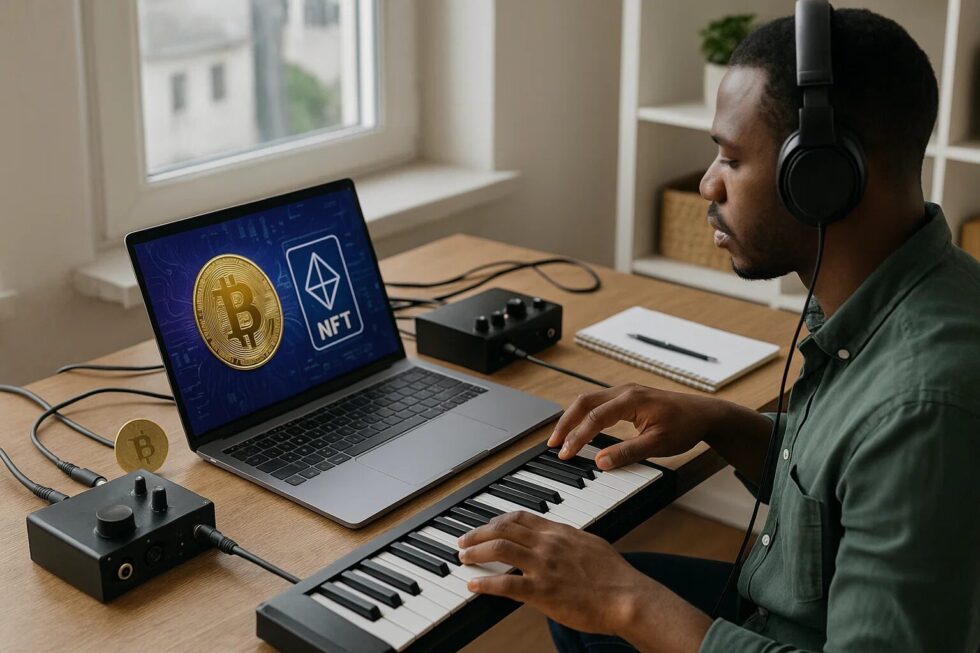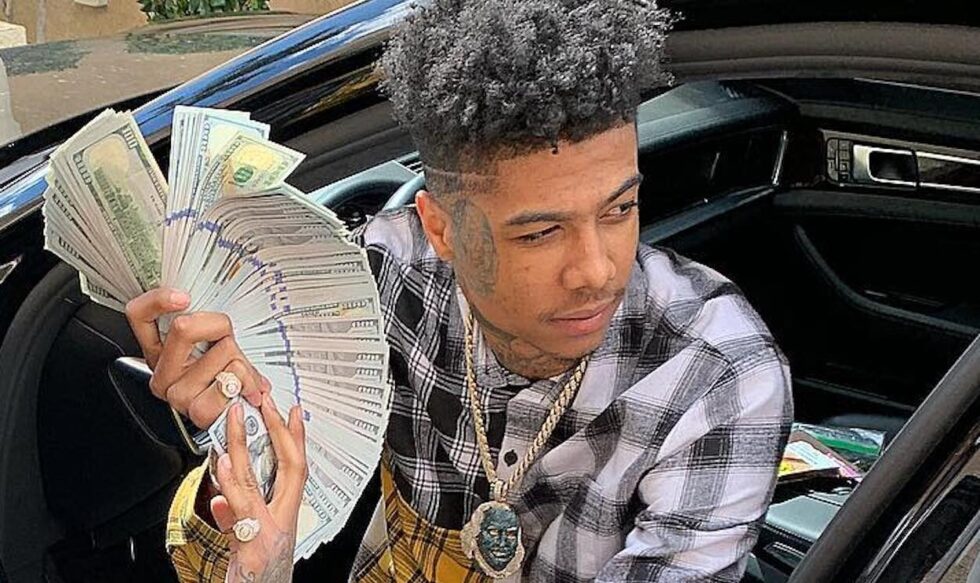What opportunities do crypto and music create: how artists earn through Web3 and NFT

Crypto and music in 2025 are merging into a powerful new ecosystem that reshapes how artists earn money and interact with their audiences. Unlike the traditional industry model dominated by record labels, Web3 tools and NFTs allow musicians to take back control of their rights, pricing, and distribution channels. This means artists can now sell songs, albums, or even experiences directly to fans without intermediaries, while at the same time building strong communities around their creative output. NFTs are not just collectibles, but keys to unique access such as concert tickets, behind-the-scenes content, or royalties. The global music industry is increasingly aware that this shift changes the balance of power, turning fans into co-investors and giving artists the possibility of sustainable revenue streams. According to G.business, the Web3 model has already gone mainstream among both independent and world-famous musicians.
How Web3 is transforming the music industry
Web3 represents a decentralized internet infrastructure built on blockchain, where every digital asset can be verified, owned, and traded without a central authority. In music, this means an artist can release an album or single directly onto a blockchain and sell it as a limited edition NFT. Each token is unique and traceable, ensuring authenticity and preventing piracy — something that traditional streaming services cannot fully guarantee. Furthermore, blockchain allows artists to automatically receive royalties from every resale of their NFT, creating a revenue stream that continues long after the initial launch. The difference compared to Spotify or Apple Music is striking: while a million plays might only generate €3,000–5,000, selling 500 NFTs at €50 each can bring in €25,000 in days. In this model, fans are not just passive consumers but partners who benefit from value growth. This dynamic creates loyalty, innovation, and higher artistic freedom.
Key advantages Web3 brings to musicians:
- Full control over rights, pricing, and distribution.
- Ability to release limited collections and create scarcity.
- Direct relationship with fans without middlemen.
- Automatic royalties from secondary sales.
- Adding perks such as exclusive videos or merchandise.
- Tokenized fan clubs with voting rights.
- Income potential far exceeding traditional models.
NFTs as a new source of artist income
NFTs are the most visible and popular tool through which musicians monetize their creativity in Web3. An NFT can represent a song, an album, artwork, or even a ticket to a private concert, and fans pay to own this unique digital asset. Importantly, each NFT can come with “utilities” — additional benefits that make ownership valuable beyond simple collecting. For instance, an NFT might grant lifelong access to VIP areas at concerts, or participation in exclusive fan chats. The resale market adds another dimension: when fans trade NFTs, the artist continues to receive a percentage (typically 5–10%) from each transaction. Major names like Kings of Leon proved this model works, selling over $2 million worth of NFTs in a single week. Independent artists are following suit, using NFTs to fund albums without loans or label advances. The democratization of funding makes the industry more inclusive and dynamic.
Popular types of music NFTs in 2025:
- Exclusive albums or singles available only as NFTs.
- Tickets to private online or offline concerts.
- Collectible digital artwork, posters, or covers.
- VIP passes to live events.
- Fan participation in creating remixes or artwork.
- Limited-edition remasters of old albums.
- Future royalties shared with token holders.
Platforms for music in Web3
To issue and sell NFTs, artists rely on specialized platforms and marketplaces. Each one offers different mechanics, fees, and target audiences. Some, like Audius, focus on decentralized streaming with built-in donation systems, while others like Royal.io allow fans to buy shares of music rights and earn from streaming revenues. General NFT platforms such as Opensea remain popular for broad exposure, but music-specific portals are growing rapidly. Choosing the right platform depends on the artist’s goals: whether to maximize community engagement, collect upfront cash, or build a long-term royalty stream.
| Platform | Features | Commission | Best for |
|---|---|---|---|
| Audius | Decentralized streaming + crypto tips | 0–10% | Independent artists |
| Royal.io | Sale of royalty shares to fans | 15% | Established musicians |
| Opensea | General NFT marketplace, global reach | 2.5% | Any digital content |
| Zora | Unlimited collections, no intermediaries | 0% | Small releases and experiments |
How fans invest in their favorite artists
One of the most revolutionary aspects of Web3 music is that fans are no longer just listeners — they are stakeholders. Through fan tokens and DAOs (decentralized autonomous organizations), supporters can directly influence the direction of an artist’s career. For example, by holding tokens, fans might vote on where the next concert should take place or choose artwork for an upcoming release. These tokens can also appreciate in value, meaning early supporters benefit financially if the artist grows in popularity. This mechanism creates unprecedented loyalty and engagement, strengthening communities around music. Some platforms even allow shared royalties, so token holders receive small payments when songs generate revenue. The blurring of lines between audience and investor could redefine the business side of the industry for years to come.
Ways fans can participate through Web3:
- Buying fan tokens with voting power.
- Joining artist-specific DAOs to shape projects.
- Receiving dividends from streaming revenues.
- Accessing exclusive behind-the-scenes content.
- Co-owning songs or music videos.
- Gaining entry to real-world events.
- Reselling tokens for profit on secondary markets.
Revenue comparison: streaming versus NFTs
To understand the shift, one must look at the numbers. Streaming platforms pay fractions of a cent per play, requiring millions of listens to make modest income. In contrast, NFTs provide upfront payments plus long-term royalties. An artist with a loyal fanbase of only a few hundred people can earn more than from millions of anonymous streams. This has made NFTs especially attractive to niche and independent artists.
| Model | Requirement | Average Revenue | Example |
|---|---|---|---|
| Streaming | 1.5 million plays | €5,000 | Spotify, Apple Music |
| NFT Release | 500 tokens at €50 | €25,000 + royalties | Audius, Royal.io |
Risks and limitations of Web3 music
Despite its promise, Web3 is not without risks. Volatility in cryptocurrency markets can sharply affect the value of tokens, leaving both artists and fans exposed to financial losses. Legal frameworks for digital rights are still under development in many countries, making enforcement of ownership sometimes unclear. Transaction fees, known as “gas fees,” on networks like Ethereum can be high, discouraging small releases. Security issues, such as hacked wallets or scam projects, also pose threats. Artists entering Web3 must balance the benefits with these challenges, ideally consulting both legal and technical experts before large-scale launches. The combination of creativity and blockchain requires careful planning to avoid pitfalls.
Main risks musicians should consider:
- Price volatility of cryptocurrencies and tokens.
- Insufficient legal protection of digital rights.
- High transaction fees for minting NFTs.
- Risk of fraud on unregulated marketplaces.
- Technical barriers for non-IT-savvy artists.
- Dependence on crypto market trends.
- Uncertainty of long-term demand.

Real examples of artists earning through NFT and Web3
International cases:
- Snoop Dogg – Sold millions in NFT collections, created a virtual estate in The Sandbox metaverse.
- Grimes – Earned around $6 million in under 30 minutes with music and digital art NFTs.
- Kings of Leon – Released the first full NFT album, generating $2 million in a week.
- Eminem – Participated in exclusive NFT art and music drops for fans.
German and European cases:
- Kraftwerk – Celebrated their anniversary with NFT posters and rare tracks, earning over €500,000.
- Rammstein (Till Lindemann) – Sold unique video art and limited digital content.
- Berlin-based DJs – Experimented with NFT tickets for underground techno clubs like Berghain.
- Tokimonsta (Berlin electronic scene) – Used Web3 to sell singles directly to fans.
Common features of successful NFT projects:
- Exclusive, limited-edition content.
- Strong fan communities driving hype.
- Integration with live or digital events.
- Media support amplifying visibility.
- Shared benefits for both artist and buyer.
Germany vs. USA: NFT revenue comparison
| Country | Artist / Project | NFT Format | Revenue | Market Notes |
|---|---|---|---|---|
| USA | Snoop Dogg | NFT album + collectibles | $7M+ | High demand, celebrity-driven |
| USA | Grimes | Music and art NFTs | $6M | Sold out in 30 minutes |
| USA | Kings of Leon | NFT album + VIP tickets | $2M | First NFT album release |
| Germany | Kraftwerk | Posters + music NFTs | €500K+ | Integrated into museum exhibitions |
| Germany | Rammstein | Exclusive videos | €300K | Fan-driven European market |
| Germany | Berlin clubs (Berghain) | NFT tickets | €50K+ | Popular in electronic scene |
Step-by-step guide: how to launch an NFT release in Germany
Artists in Germany who want to enter Web3 can follow a straightforward process. While technical knowledge helps, many platforms have simplified tools for creators. Proper planning and marketing are key to success.
Step-by-step process for artists:
- Define the NFT format: album, single, artwork, or ticket.
- Create the digital content with added value (art, video, bonus).
- Choose a blockchain (Ethereum, Polygon, or Solana).
- Open a crypto wallet such as MetaMask or Phantom.
- Register on a platform (Opensea, Royal.io, Audius).
- Upload the content, set price, quantity, and royalty rate.
- Launch and promote via social media and events.
- Earn from sales and secondary royalties.
Sample costs and revenue for one NFT release:
| Stage | Cost | Income | Notes |
|---|---|---|---|
| Studio recording + artwork | €500–1,500 | — | Production expenses |
| NFT minting fees | €50–200 | — | Gas fees vary by blockchain |
| Primary sales (200 NFTs at €50) | — | €10,000 | Initial income |
| Secondary royalties (10%) | — | €1,000+ | Ongoing earnings |
With a modest upfront investment of €1,000–1,500, an artist can potentially earn €10,000–12,000 on the first NFT drop, making this model attractive even for newcomers.
The intersection of crypto and music is no longer a futuristic experiment but an industry reality. Web3 and NFTs provide artists with financial independence, direct contact with fans, and creative freedom beyond the reach of traditional record labels. At the same time, they allow audiences to become partners, not just consumers, sharing in both artistic and financial growth. While risks remain in terms of volatility, regulation, and technical barriers, the opportunities are significant for those who adapt early. For Germany, where club culture and electronic music thrive, NFTs and Web3 platforms may become a natural extension of an already vibrant scene. As the technology matures, it is likely that more musicians — from global icons to emerging talents — will use blockchain not only as a tool of income but as a stage for innovation, community, and cultural transformation.
Latest events in politics and global economy at Cryptonews – practical tips on how to act and invest. Read: Which Cryptocurrencies Are the Most Popular in Germany Right Now